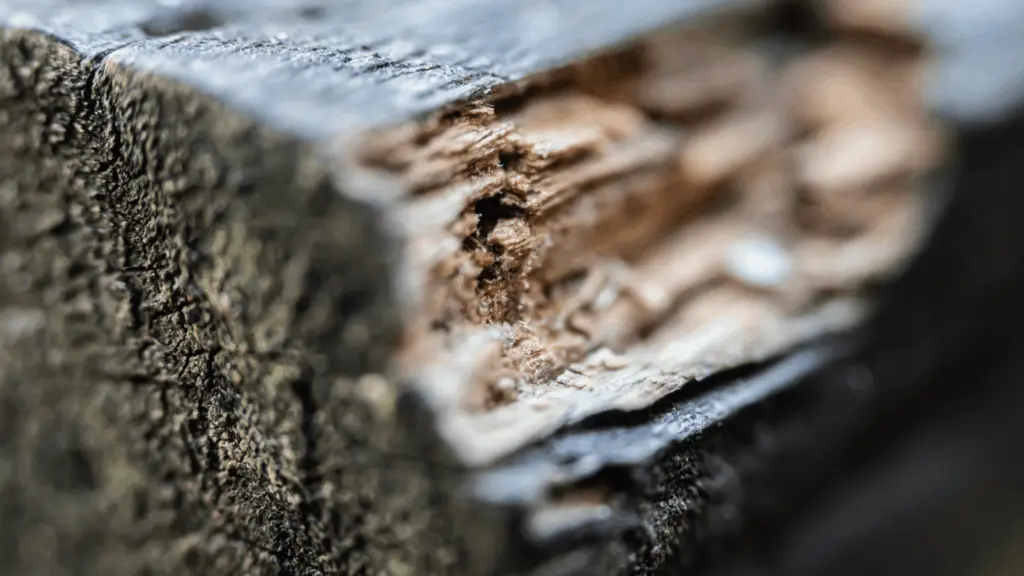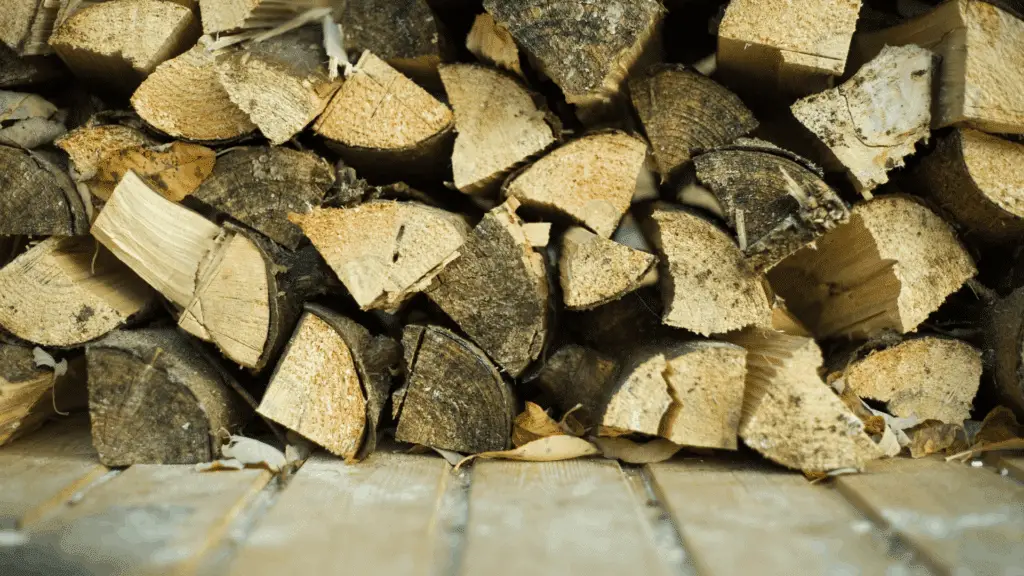If you have some wet wood on hand, you may be wondering whether it is a good idea to build furniture with it. There are several problems with working with wet wood. As such, it is generally a good idea to dry your wood first, which you can do at home.
Building furniture with wet wood can lead to shrinking, warping, cracking, and rotting. It’s also difficult, as your tools can get ruined, and the wood can be hard to cut, glue, and sand. That’s why you should dry your wood at home before using it. Air-dry it and then use heat.
In this article, you will learn everything you need to know about working with wet wood, including why you should avoid it and how to dry wet furniture.
Craft Gecko is supported by its audience. When you purchase through links on our site, we may earn an affiliate commission, at no additional cost to you.
Problems With Working With Wet Wood
Building furniture with wet wood can lead to many problems.
Wet Wood Furniture Can Get Damaged
One problem is shrinking. Moisture will eventually leave all wood, but if you create furniture with wet wood, that can damage the furniture. As the wood dries, it will shrink, causing warping and causing certain parts to become loose.

Furniture made with wet wood is more prone to damage. Whether it shrinks, cracks, or warps, it may end up looking ugly, and it may no longer serve its purpose after it is damaged. Also, furniture made with wet wood is more prone to infestation. It will rot quicker, which can be dangerous if you use wet wood for chairs, tables that you lean on for support, support columns, or flooring for your porch or terrace.
Shrinkage can also be a big problem in the case of flooring. As the wood shrinks, gaps may appear, which can cause you to trip and fall.
It Can Pose a Health Risk
Another health concern with furniture or flooring made with wet wood is that it will be more susceptible to mold and mildew. Mold can be toxic, especially if you are exposed to it for a prolonged period. Common side effects of mold exposure include headaches and nausea. People with asthma may find it more difficult to breathe. The cause of such symptoms may not be apparent right away, but mold may be the culprit.
It Is Difficult to Work With
Another big problem has to do with the actual woodworking process. If you normally use tools such as saws and blades, wet wood can pose a problem. Wet sawdust is not like dry sawdust; it will stick to your tools or get stuck in your machines and cause them to get clogged or damaged. Working with electric tools is especially problematic.

Also, it isn’t easy to work with wet wood. Wet wood is slippery and can be extremely difficult to cut, especially since your tools may get ruined. A circular saw will not work at all. You can use a chainsaw, but it will still be difficult, and it can be dangerous if there is standing water. Sanding wet wood is also difficult, as it won’t sand properly. Instead, the wood is more likely to get scratched, and you may even ruin the sandpaper.
Finally, it can be hard to make sure everything is attached properly. Normally, you might use a type of glue that works perfectly, but it is likely to fail when working with wet wood. This is because wet wood does not work well with most kinds of glue.
Is My Wood Too Wet?
If you are unsure if your wood is wet, there is a simple way to find out: Use a wood moisture meter. Yes, these tools exist, and you can find them on Amazon — they are extremely affordable. For example, this Wood Moisture Meter has two modes: Wood and Building. You can use it to figure out the moisture percentage quickly and whether it is low or high. Of course, if the wood is fresh and cut, it is wet — no need for a meter.
- ✔ACCURATE AND QUICK MEASUREMENT - Do you know why you need a moisture meter? Moisture meter for wood could help find hidden water,mold and leaks in walls and surfaces, detect the moisture content of firewood during winter. This upgraded wood moisture meter with 2 highly precision and sensitive metal pins test the moisture level of the wood when you penetrate the pins into the surface of wood, and locate the location of moisture buildup quickly and accurately. FIRST STEP IN MOLD PREVENTION!!
- ✔TWO MEASUREMENT MODES WITH 8 CALIBRATION SCALES - This moisture meter for firewood designed with WOOD and BUILDING modes could meet your any needs. Our wood moisture detector is a great tool for manufacturers, flooring installers, inspectors, and lumber suppliers to quickly and easily scan the %MC (Moisture Content) in their wood products. You can quickly know the %MC is Low (5-12%), Medium (12-17%) or High (17-60%). Its 8 calibration scales(A,B,C,D,E,F,G,H,) could test all kinds of woods.
- ✔BUILDING MODE ON PLASTER WALL GIVES YOU A SPECIFIC AND ACCUATE RESULT - Different from other types of moisture meter,ours take advanced technology to provide you a accurate and specific value when using on plaster wall directly, it is more clear to know the situation of your home. Meanwhile, it will save you valuable time after using this convenient tool to solve your moisture question in your home. In a word, more quicker and accurate to find the questions , more money and time would be saved.
Last update on 2023-06-08 at 13:02 / Affiliate links / Images from Amazon Product Advertising API
How to Dry Wood at Home
Fortunately, however, it is possible to dry wood at home. If the wood you are working with seems too wet, err on the side of caution and dry it at home. The first step is usually air drying it. Although air-drying wood takes time, there are ways to speed it up.
The first thing to keep in mind is that improving circulation is necessary. It is best if you can put it outside — though make sure to keep it away from moisture and the rain, as that would be counterproductive and make you have to start all over again. If you keep your wood inside, it will take a lot longer to dry, as there is less circulation. Keep it outside if you can. Placing it in a sunny area and/or in an area where there is a breeze will help speed up the drying process.

If you must keep the wood inside because it is raining too much outside, or don’t have space inside, focus on improving circulation. Opening the windows can help, as can using fans to increase circulation and create an artificial breeze.
However, while air drying will help get most of the moisture out, it won’t quite help you reach your desired moisture levels for building furniture. If you only air dry it — even if you air dries it for a very long time — you may still experience problems such as warping, shrinking, and rotting. That’s why you need to use some heat as well.
The sun is a natural source of heat if you don’t have anything else. However, you can even use something simple as a portable heater or even your radiator. You can even use your fireplace as a heat source — even a hairdryer is better than nothing. Use your water moisture meter to help you figure out if your wood is dry enough. It should be low, between 5 and 12 percent (ideally below nine percent).
How to Dry Wet Wood Furniture
If you already created furniture with wet wood, you can help it dry out quickly to prevent rotting. Follow the previous section’s steps — improve circulation by using fans and opening the windows or place the furniture outside. You can use heat as well, but be careful and stay safe.
Another thing that can help, whether you are drying lumber or wet wood furniture, is to turn on your exhaust fans, remove stale air, and improve circulation. A dehumidifier can also help dry the wood in a closed space, especially in a room with humidity.
If your furniture is already starting to rot, you can follow the above steps to dry out the furniture if the rotting is in its early stages. However, you will have to either throw out the furniture or kill the fungus or pests, remove the rot, and use resin to make fillings for late-stage rotting. This Youtube video will show you how to repair rotting furniture:
Conclusion
If you must work with wet wood, it is not impossible. However, it is not recommended. Not only is it difficult, but the end product may get ruined. That’s why you would be better off having a little patience and drying the wood at home. The less moisture, the better, so even if you don’t have time to dry the wood completely, at least try to dry it as much as you can.
Sources
- Dreamlands Design: Why Woodworking Doesn’t Work With Wet Wood
- Wagner Meters: Too Wet or Too Dry Woodworking: A Sticky Situation
- Conservation Wiki: Stabilizing Wet Furniture and Wood
- Woodworking Squad: Can You Work and Build Stuff with Wet Wood?
- Bailey Line Road: WOODWORKING: 4 Most Important Air-Drying Tips For Your Next Project
